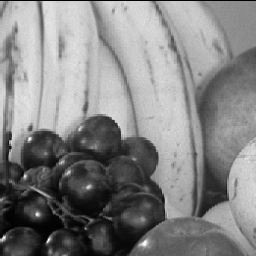
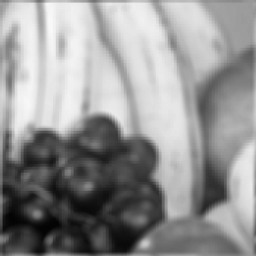
Next a fruit image was degraded with defocusing at a = 30. The result
is shown below.


left: original image, right: blurred image
With the absence of noise, the inverse filtering method was used to restore the picture. This was done by taking the image g and the two dimensional FFT to find G. Then HI(H Inverse) was calculated by taking the reciprocal of every element of H,the blurring function. Then G was multiplied by HI, and the product went through an inverse FFT to restore the image.
The results shown below are the restored images of the blurred image above using inverse filtering with HI at a = 30 , and a = 28.
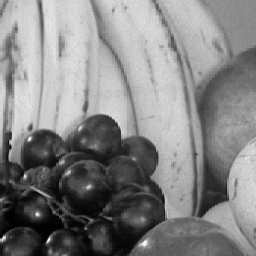
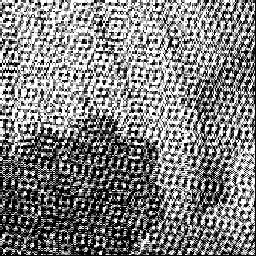
Inverse filtering, left: a = 30, right: a = 28
Notice that the inverse filter for a = 30 makes a complete restoration of the image. The inverse filter at a = 28, however, further distorts the image. This example shows the sensitivity of inverse filtering. Unless the exact distortion is known, inverse filtering proves to be a difficult method of image restoration. Usually, the focal length a is unknown. Therefore accurate estimates have to be made to receive an effective restoration.Next, Gaussian noise with mean zero and variance .001 was added to the blurred image. The noise further distorted the image by giving it a snowy appearance.

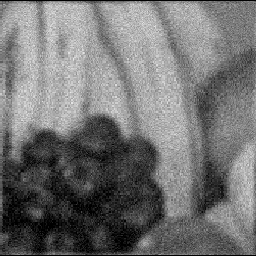
left: Blurred Image, a = 30, right: Blurred image with noise
The inverse filter, HI with a = 30 was used, and the Wiener filter with K = .0045 was implemented.
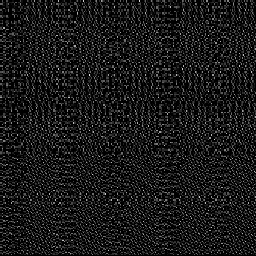
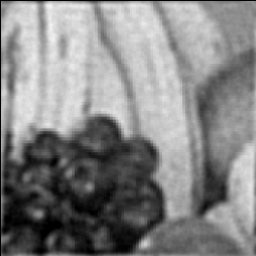
left: Inverse filter, a = 30 right: Wiener filter, K = .0045
When noise was added to the image, the inverse filter failed to restore the image. In fact, the filter made the fruit image indistinguishable. The Wiener filter, however, was able to reduce the noise, and it also made the image more focused. The grapes in the restored image were the most visible proof of this improvement. These examples show that in the presence of noise, Wiener filtering becomes a much more powerful method of image restoration.
Finally there was an attempt to restore the following blurred image through Wiener filtering.
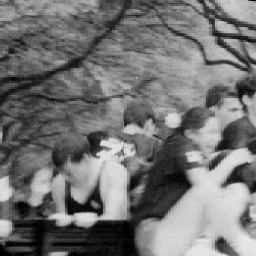
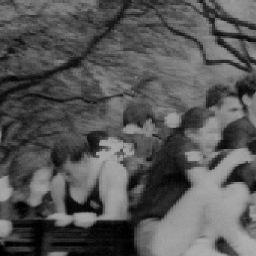
left: Original image right: Image with Wiener Filtering
The restored image did not significantly improve the blurred image. Reasons for this difficulty were the fact that proper values of a and K were unknown for the Wiener filter. A correct image can only be accomplished through trial and error. In addition, single lens unfocusing may not be the only distortion in this picture. It is highly likely that motion blurring and other degradations may be present. The Wiener filter used was only able to account for the lens distortion and not for any other blurring that may have occured.